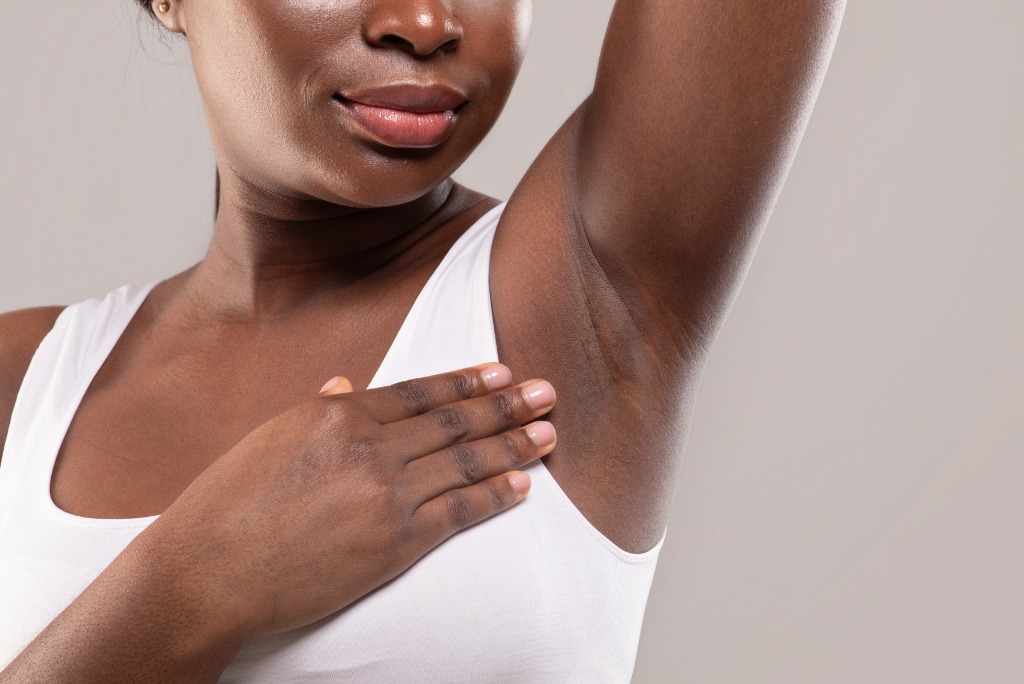Hidradenitis suppurativa (HS) is a chronic, inflammatory skin condition that is not well-known. In fact, patients with HS often complain of pimples, sores or lumps on their armpits or groin area, having no idea these are actually symptoms of a more serious condition. Though it’s not well known, HS is more common than you might think, and awareness and education can help people with HS get the diagnosis and help they need.
What are the Signs of Hidradenitis Suppurativa?
HS is widely underdiagnosed, meaning many people who have it do not know they have it. This is because HS can look like pimples and acne cysts, leading people to assume it is a skin condition that will eventually clear up on its own. However, the symptoms of HS may be more severe and persistent than acne.
Symptoms of Hidradenitis Suppurativa include:
Recurring Breakouts that Look Like Pimples or Boils
HS may look like a pimple or a boil, and similarly to a pimple or a boil, HS may clear up on its own. However, HS breakouts will often redevelop in the same area and sometimes redevelop in the exact same spot.
Breakouts that Leak Pus
HS can create narrow channels called sinus tracts under the skin. When these breakouts reach the surface of the skin, they can leak pus.
Where Does Hidradenitis Suppurativa Develop?
In its early stages, HS often presents as a small, pea-sized lump in one place. However, if left untreated, HS can spread and lead to the development of larger breakouts.
HS develops in areas where skin touches skin, including:
- Armpit
- Genitals
- Buttocks
- Inner thighs
- Underneath the breast
- Lower abs or waist
Possible Causes of Hidradenitis Suppurativa
The exact cause of HS remains a bit of a mystery. However, we do know that HS begins as a result of blocked hair follicles. According to the American Academy of Dermatology, scientists believe that when a hair follicle becomes clogged with keratin, bacteria breed within it. When a hair follicle has more keratin and bacteria than it can hold, it bursts, causing the cyst-like breakout associated with HS. The pus that leaks from the rupture hair follicle spreads to nearby follicles, leading to the development of more lumps.
With that said, HS is not an infection and it’s not contagious. It’s also not caused by poor hygiene.
HS is believed to develop due to an immune response that generates too much inflammation. People with HS may have an overactive immune system, which causes their bodies to overreact to the presence of a blocked hair follicle. This may lead to the chronic and recurring breakouts associated with HS.
More research is still needed to understand the causes of HS fully.
How is Hidradenitis Suppurativa Diagnosed?
Receiving an accurate and prompt diagnosis of HS is essential for developing a treatment plan and preventing it from worsening.
While HS may resemble other skin conditions, such as acne, dermatologists have the experience and knowledge necessary to diagnose HS properly.
To diagnose HS, your dermatologist will:
Collect Medical History: Your dermatologist will ask you about the location and symptoms of your breakouts. Be as specific as possible when describing your symptoms, as this will help your dermatologist determine whether you have HS or another skin condition.
Conduct a Physical Examination: During a physical examination, your dermatologist will look for the characteristic signs of HS. While it may appear as blackheads, pimples, scarring, and abscesses to you, dermatologists have a trained eye that can help spot HS.
Recommend Lab Testing: In some cases, your dermatologist may order lab tests to rule out other potential causes of your symptoms. For example, if your dermatologist suspects you may have an infection, they may order a blood test or a culture of the pus from your breakout.
Treatments for Hidradenitis Suppurativa
As of today, there is no cure for HS. However, dermatologists have had success treating the condition with therapies that aim to:
- Reduce flare-ups
- Heal breakouts
- Relieve pain
- Prevent HS from worsening
Skincare
Your dermatologist may recommend a personalized skincare plan with soaps and topical treatments to help manage your condition. This may include products with benzoyl peroxide or non-irritating, non-comedogenic cleansers.
Your skincare plan may also include topical antibiotics, retinoids, or corticosteroids to help reduce inflammation and prevent HS from worsening.
Systemic Medications
Oral medications may be ideal for advanced HS that has affected multiple areas of the body. These medications can help reduce the inflammation that causes HS breakouts.
Additionally, antibiotics may be used to reduce the number of bacteria on the skin and in hair follicles. Oral antibiotics are often used as a short-term solution during an HS flare-up.
There are also other systemic treatments used to treat HS off-label, such as immunomodulators and immunosuppressants, which help to tame the over-inflammation causing the lesions. There are also a number of different treatments in developmental stages currently.
Procedures
Depending on the severity of your HS, your dermatologist may also recommend one or more in-office procedures. These can help eliminate existing breakouts and prevent new ones from forming.
Examples include:
- Corticosteroid injections
- Laser hair reduction
- Incision and drainage
- Laser surgery
Clinical Research on Hidradenitis Suppurativa
Unfortunately, not everyone with HS responds to traditional treatments. For these people, clinical research studies may be an option.
Through clinical research studies, dermatologists are able to test new and innovative treatments for HS. This allows people with HS to access cutting-edge therapies that are not yet available to the general public.
If you’re interested in learning more about clinical research opportunities for HS, contact Olympian Clinical Research today. With offices in Tampa, Clearwater and Saint Petersburg, FL, we are dedicated to advancing the field of dermatology through clinical research.

Recent Comments